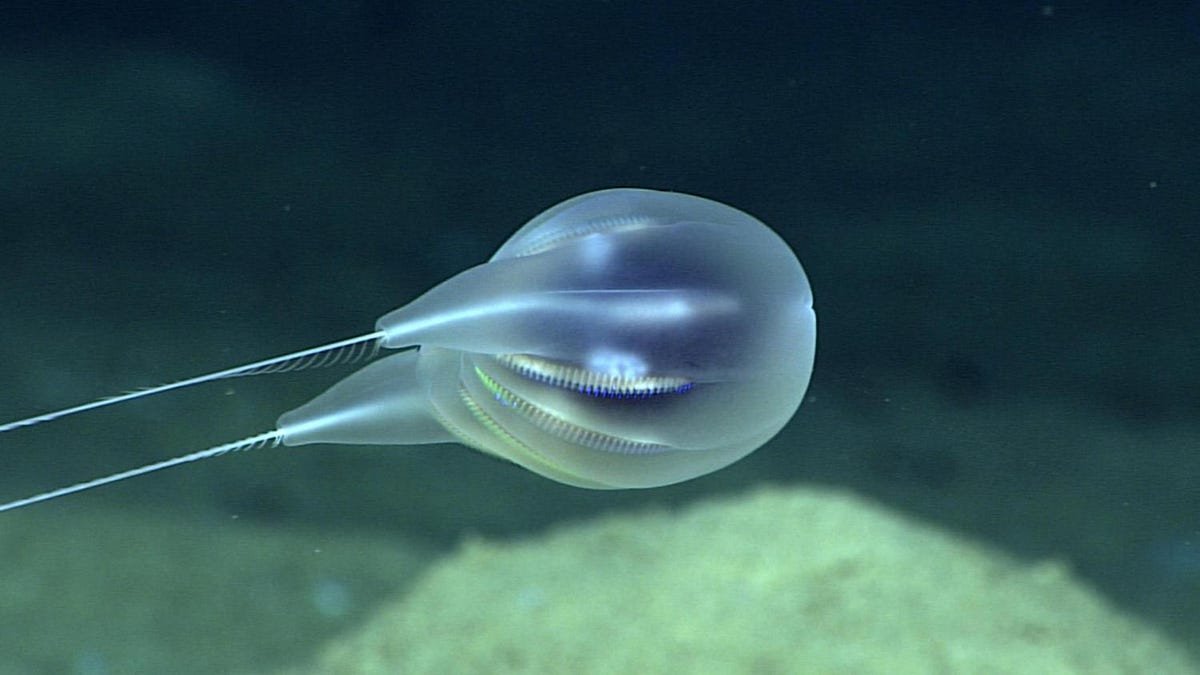Scientists discover 'beautiful and unique' gelatinous sea animal
It looks a bit like a see-through plucked space turkey.
Scientists like to get their hands on things when possible, especially when describing new animal species. A team of National Oceanic and Atmospheric Administration researchers, however, embraced a hands-off approach when it came to a surprising underwater find: a new species of comb jelly.
"It's unique because we were able to describe a new species based entirely on high-definition video," said NOAA Fisheries scientist Allen Collins in a statement Nov. 20.
The NOAA team named the translucent animal Duobrachium sparksae. It's a ctenophore, popularly known as a comb jelly. Not to be confused with jellyfish, comb jellies are ethereal, gelatinous and carnivorous denizens of the deep.
The new species dwells off the coast of Puerto Rico and was first spotted in video footage captured by NOAA's Deep Discoverer remotely operated vehicle in 2015. NOAA released a stunning video showing the comb jelly floating above the seafloor.
Collins described it as looking like a party balloon. The researchers used a laser system to measure the animal, which clocked in at about 2.3 inches (6 centimeters) tall, not counting the long dangly tentacles.
NOAA Fisheries scientists knew right away the creature was something unusual, but it takes time to do the legwork to declare a new species. The team published a paper describing Duobrachium sparksae this month in the journal Plankton and Benthos Research.
"It was a beautiful and unique organism," said lead author Mike Ford, a NOAA Fisheries scientist. The tentacles appeared to touch the seafloor, but it's unclear if it was somehow anchored to the bottom.
The researchers spotted three individuals, but much remains unknown about the animals. The scientists still hope to collect an actual sample of the comb jelly to fill in some of the blanks. Until then, we can enjoy the mesmerizing video of an underwater marvel.


